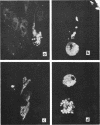Abstract
Richardson, Marvis (Michigan State University, East Lansing), and Jane N. Holt. Multiplication of Brucella in cultured lymphoid and nonlymphoid cells. J. Bacteriol. 88:1163–1168. 1964.—Growth curves were established for the multiplication of Brucella abortus in cultured bovine cells. The number of viable brucellae was determined by colony count after lysis of the parasitized tissue cells. It was found that the number of brucellae dropped during the first 3 to 6 hr. This was followed by intracellular growth. Brucellae multiplied in uterine mucosal and fetal skin cells at an exponential rate with a 4-hr generation time. In contrast, only limited multiplication occurred in spleen cell cultures, usually approaching the stationary phase by 20 to 30 hr. Preliminary results indicated an average generation time of 8 hr in calf spleen cells. Differences were apparent in the ability of spleen cells from individual calves to support intracellular growth. This suggests that a relationship may exist between the establishment of intracellular pathogens in vitro and the natural resistance of the animal. By the use of fluorescein-labeled antisera, some insight was gained into the fate of brucellae in lymphoid cells. Fluorescent antisera stained intact brucellae and also revealed soluble antigen in the cytoplasm of reticularlike cells.
Full text
PDF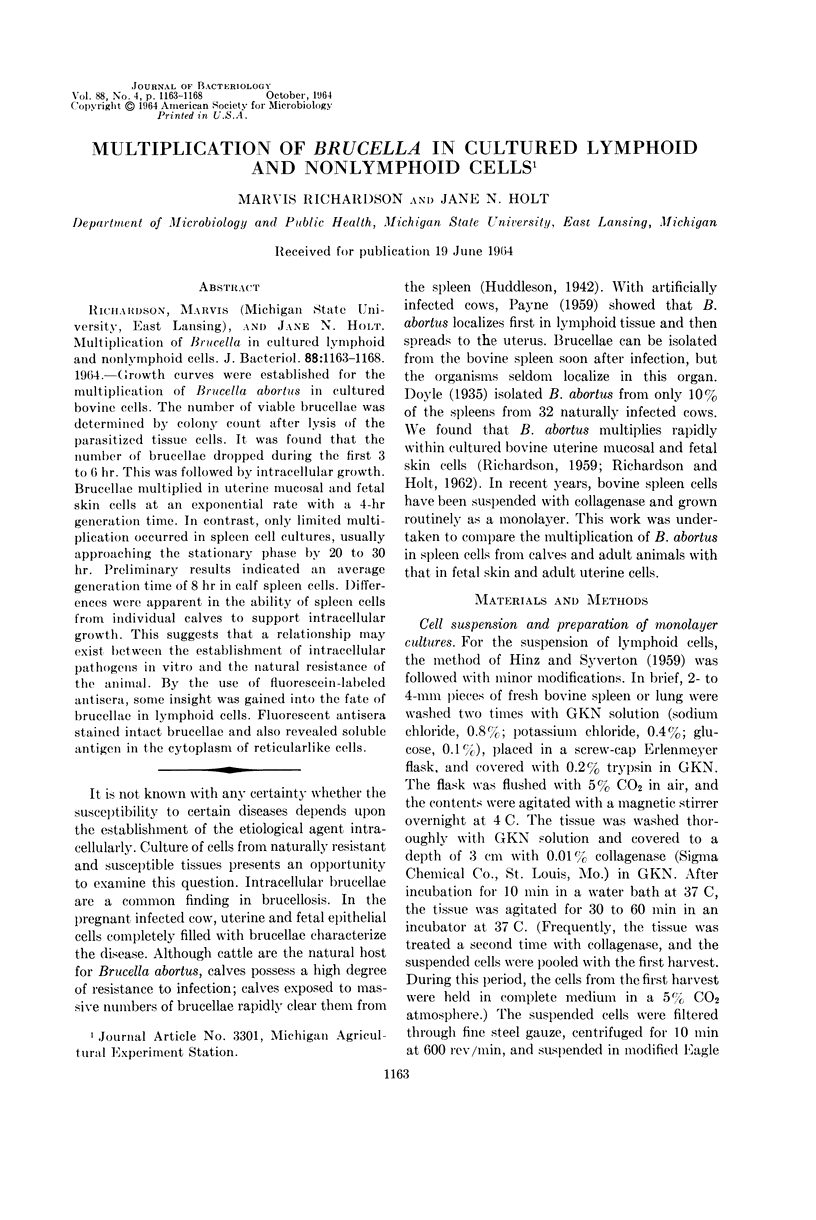
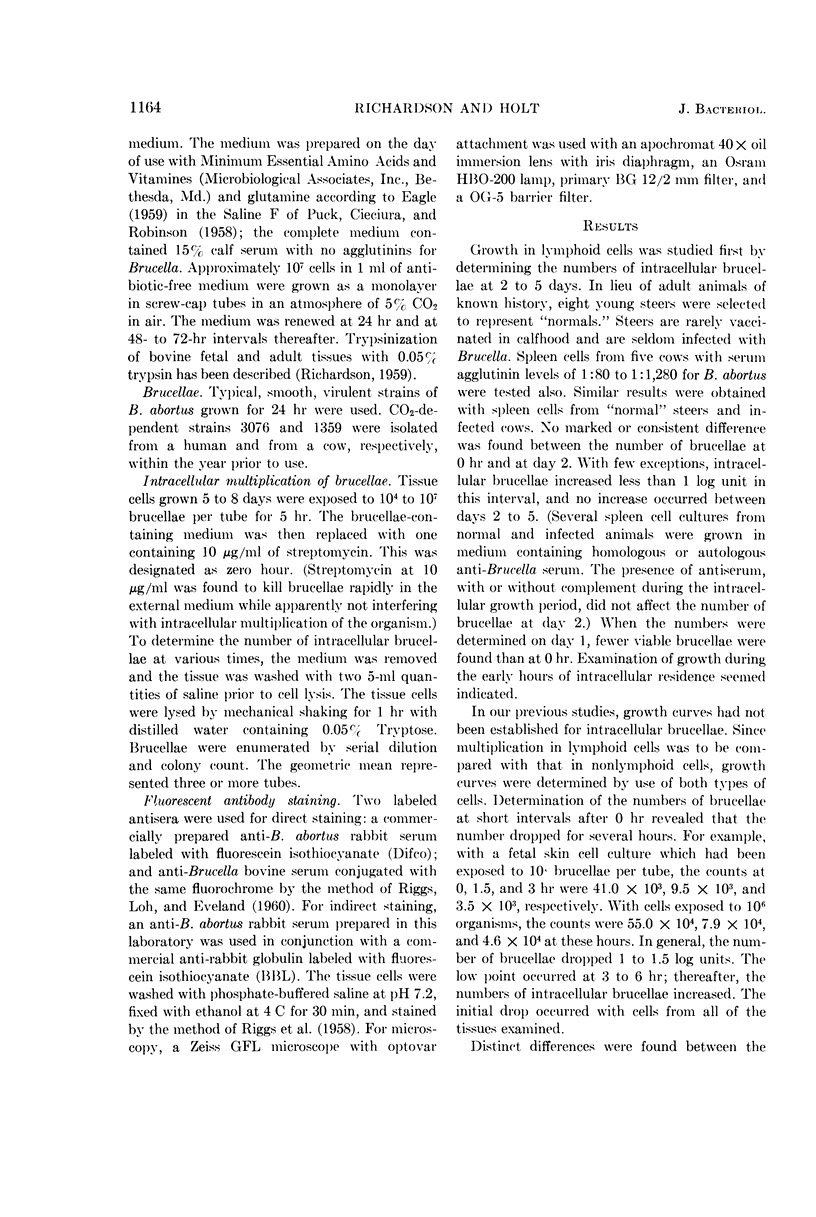
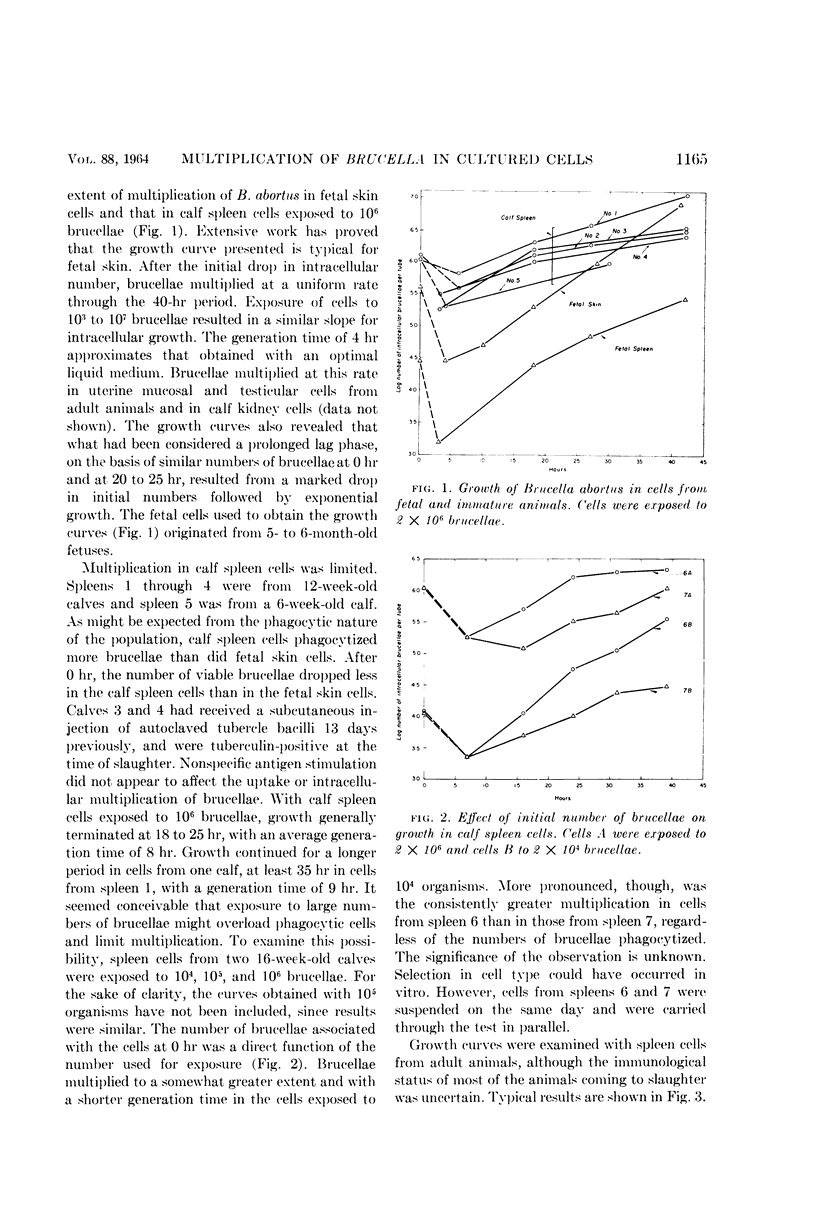
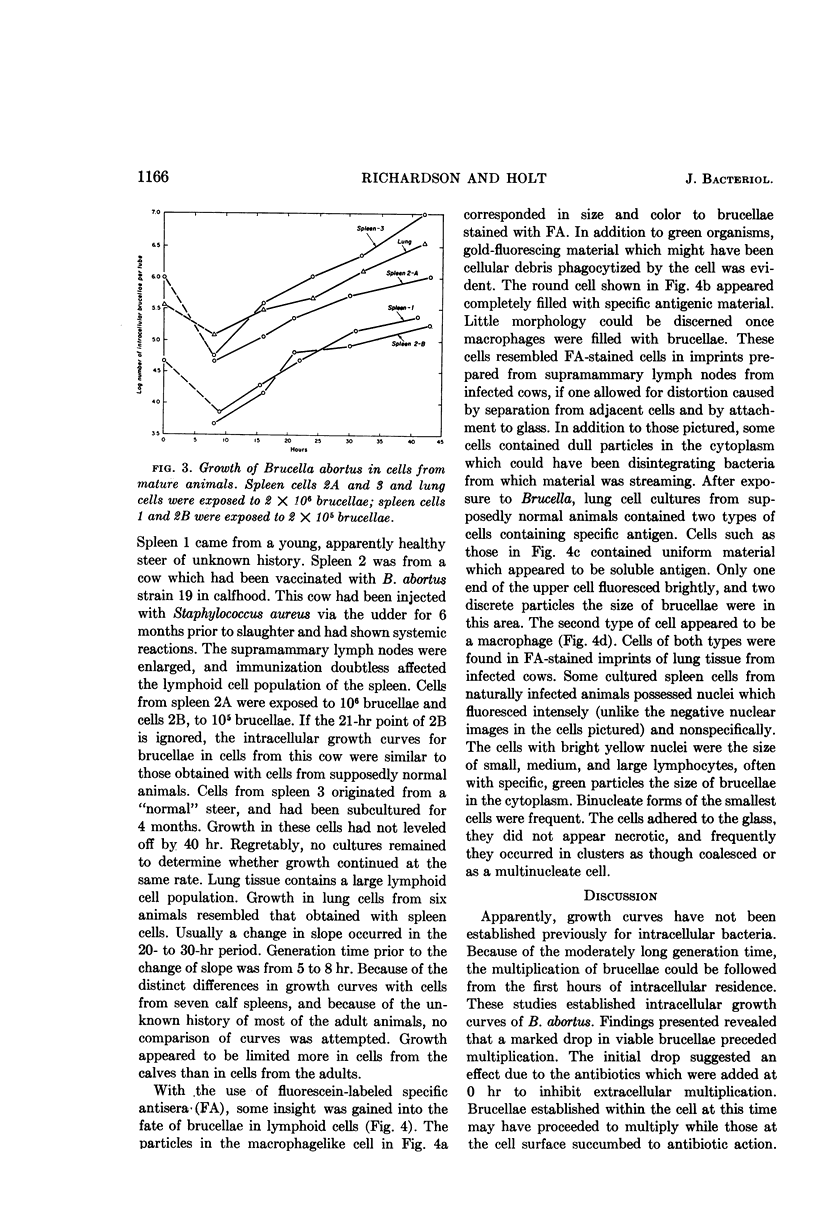
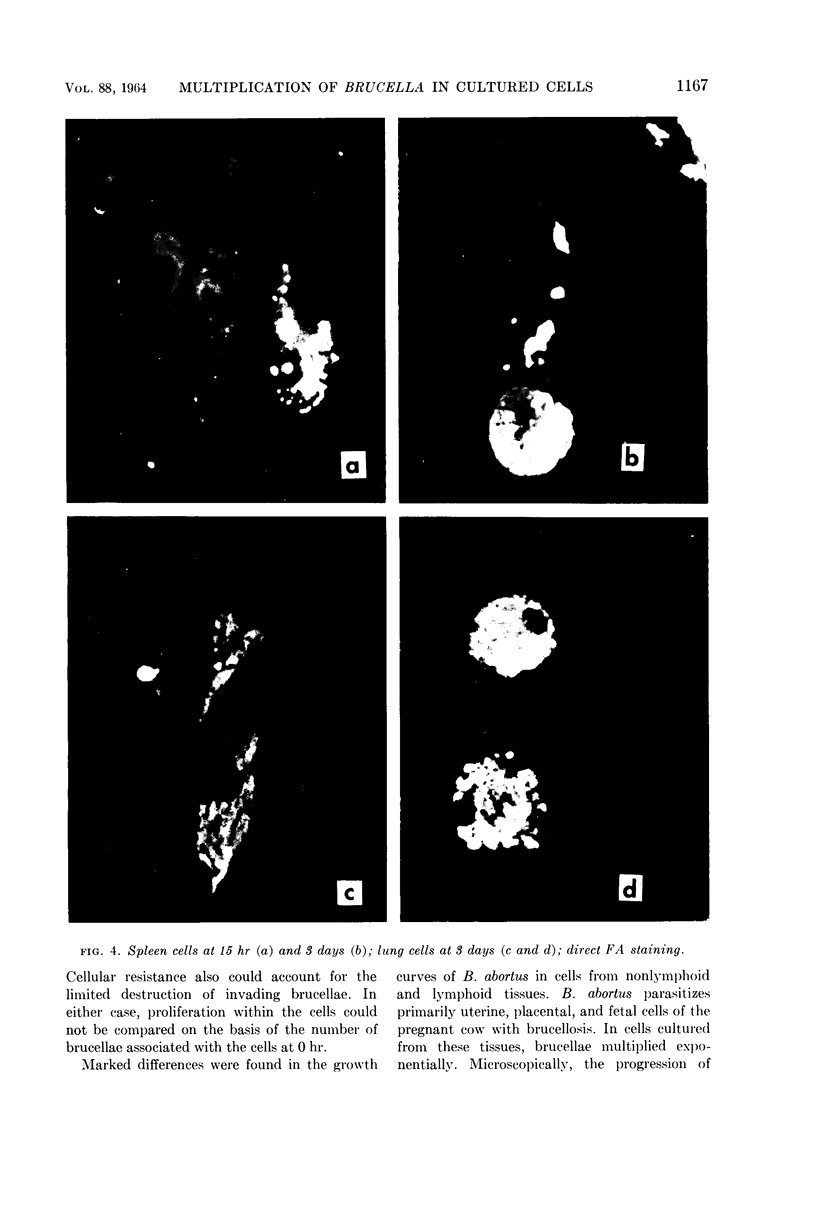
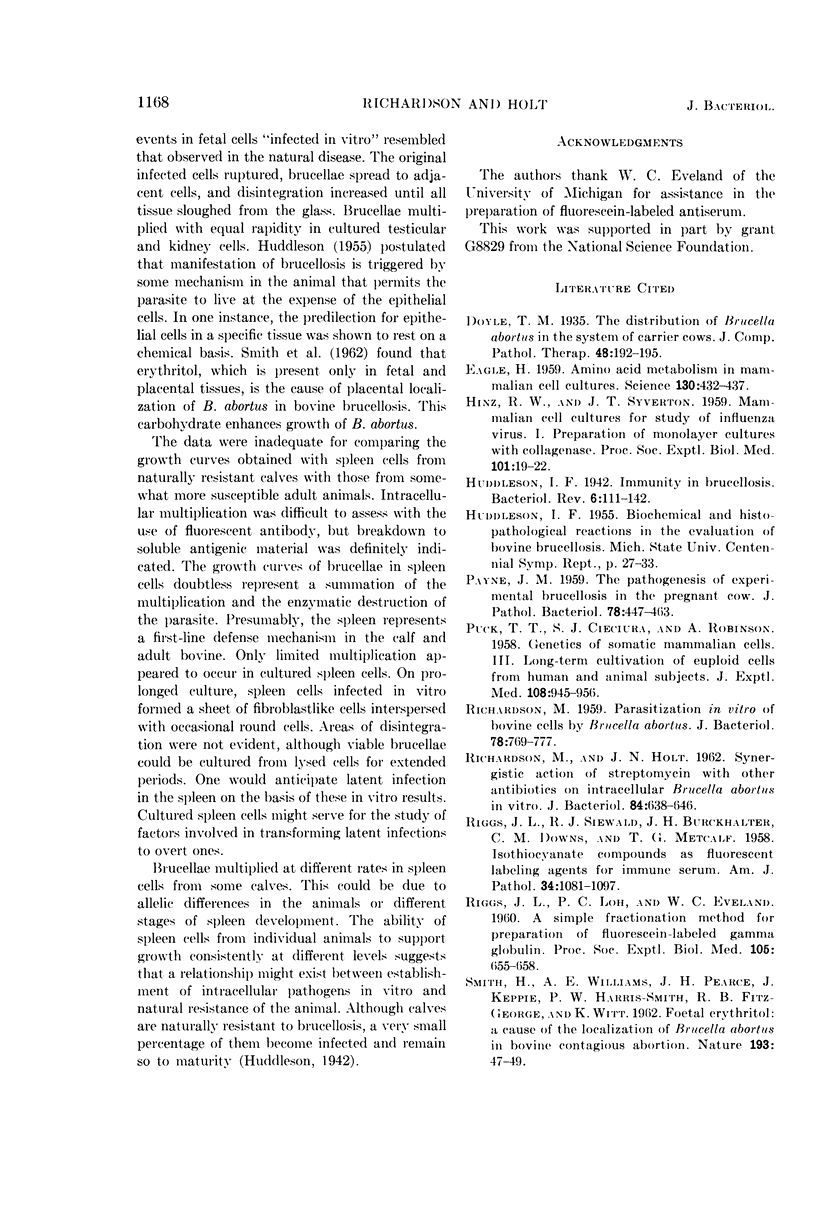
Images in this article
Selected References
These references are in PubMed. This may not be the complete list of references from this article.
- EAGLE H. Amino acid metabolism in mammalian cell cultures. Science. 1959 Aug 21;130(3373):432–437. doi: 10.1126/science.130.3373.432. [DOI] [PubMed] [Google Scholar]
- HINZ R. W., SYVERTON J. T. Mammalian cell cultures for study of influenza virus. I. Preparation of monolayer cultures with collagenase. Proc Soc Exp Biol Med. 1959 May;101(1):19–22. doi: 10.3181/00379727-101-24818. [DOI] [PubMed] [Google Scholar]
- Huddleson I. F. IMMUNITY IN BRUCELLOSIS. Bacteriol Rev. 1942 Jun;6(2):111–142. doi: 10.1128/br.6.2.111-142.1942. [DOI] [PMC free article] [PubMed] [Google Scholar]
- PAYNE J. M. The pathogenesis of experimental brucellosis in the pregnant cow. J Pathol Bacteriol. 1959 Oct;78:447–463. doi: 10.1002/path.1700780211. [DOI] [PubMed] [Google Scholar]
- PUCK T. T., CIECIURA S. J., ROBINSON A. Genetics of somatic mammalian cells. III. Long-term cultivation of euploid cells from human and animal subjects. J Exp Med. 1958 Dec 1;108(6):945–956. doi: 10.1084/jem.108.6.945. [DOI] [PMC free article] [PubMed] [Google Scholar]
- RICHARDSON M., HOLT J. N. Synergistic action of streptomycin with other antibiotics of intracellular Brucella abortus in vitro. J Bacteriol. 1962 Oct;84:638–646. doi: 10.1128/jb.84.4.638-646.1962. [DOI] [PMC free article] [PubMed] [Google Scholar]
- RIGGS J. L., LOH P. C., EVELAND W. C. A simple fractionation method for preparation of fluorescein-labeled gamma globulin. Proc Soc Exp Biol Med. 1960 Dec;105:655–658. doi: 10.3181/00379727-105-26207. [DOI] [PubMed] [Google Scholar]
- RIGGS J. L., SEIWALD R. J., BURCKHALTER J. H., DOWNS C. M., METCALF T. G. Isothiocyanate compounds as fluorescent labeling agents for immune serum. Am J Pathol. 1958 Nov-Dec;34(6):1081–1097. [PMC free article] [PubMed] [Google Scholar]
- Richardson M. PARASITIZATION IN VITRO OF BOVINE CELLS BY BRUCELLA ABORTUS. J Bacteriol. 1959 Dec;78(6):769–777. doi: 10.1128/jb.78.6.769-777.1959. [DOI] [PMC free article] [PubMed] [Google Scholar]
- SMITH H., WILLIAMS A. E., PEARCE J. H., KEPPIE J., HARRIS-SMITH P. W., FITZ-GEORGE R. B., WITT K. Foetal erythritol: a cause of the localization of Brucella abortus in bovine contagious abortion. Nature. 1962 Jan 6;193:47–49. doi: 10.1038/193047a0. [DOI] [PubMed] [Google Scholar]



